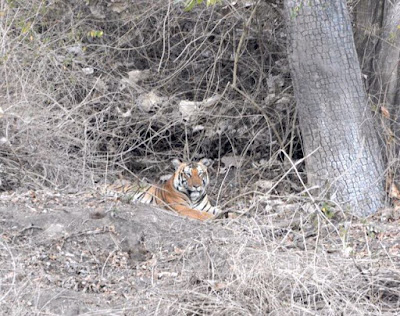The problem of human-animal conflict is one that has plagued conservationists, forest dwellers, those living around reserves, as well as the animals for years. According to the environment ministry, encounters with wildlife saw approximately 1,144 human deaths between April 2014 and May 2017. Although the debate continues, a plausible solution to this challenge does not seem near.
Confined to grasslands and dwindling forests, the animals are driven to the fringes in search of food and territorial space. This, most often than not, spells trouble for the animals and the people residing in and around the jungles. Elephants, for instance, are extremely intelligent and shy. Given a choice, they prefer to stay deep inside the vegetation, feasting on succulent bamboo and grass. However, destruction of their natural habitat and crucial elephant corridors has resulted in these majestic creatures venturing out into the open and stumbling onto the paddy and sugarcane fields and in the process, realizing the easy availability of food. From railway tracks to fields and highways, elephants meet a ghastly, untimely end. Then there’s the problem of leopards straying onto highways, or even backyards of those who have homes bordering around forests; although, it’s comparatively rare for a tiger to venture into human habitation, unless looking for cattle. That said, tigers rarely molest human beings. This, I have spoken at length in one of my earlier blogs; so I’d be digressing if I dwell on this subject further.
The increase in incidents of human-animal conflict in recent times put forth a lot of uncomfortable questions, questions that no one has convincing answers to. Yet, it’s not all bad news. Tribal rehabilitation programs, a subject I had touched upon in my previous blog, are underway in Karnataka, while the state’s forest department has left no stone unturned in their effort to minimize the instances of animals in our backyards. So what happens when a wild boar or perhaps a leopard enters private property?
“Once we have confirmation that the information is 99% accurate, our team immediately swings into action, to remove the animal from the property and release it into the forest with as little trauma as possible,” explained a forest officer from the Karnataka Forest Department.
With people venturing deep into the jungles in search of firewood and food, the risk of chancing upon a tusker or a tiger is high. This, coupled with the rapid urbanization, means this problem isn’t going away anytime soon. Armed with walkie-talkies, mobile phones, and in the case of beat guards, and above, guns, personnel from the forest department patrol the forests regularly. It’s a tough job indeed; for they not only have to reduce human interference and watch out for forest fires, but also keep their eyes and ears open for poachers.
Speaking of poaching, this is a menace that has plagued the jungles of India since time immemorial. Always on the alert, the guards and foresters patrol national parks and reserves, looking out for suspicious activity and information on poachers. Be it Karnataka or any other forests in India, the demand for ivory, tiger skin and other body parts, as well as game meat has kept anti-poaching squads on their toes. Although, with the formation of the Special Tiger Protection Force, the instances of poaching in prime tiger and elephant reserves has reduced considerably. The Nagarhole Tiger Reserve, for instance, has 30 Anti-Poaching Camps. The beat guards, while on duty, are expected to report everything from animals that have died of natural causes or those who might have been killed by poachers, to the illegal felling of trees. Tracking software and GPS enabled mobiles automatically upload and share the recorded data with the range officer, thereby eliminating the need for manual reports and reducing the margin for error. Additionally, the placement of camera traps and the influx of tourism in certain areas, along with the Central Government’s blessing to protect and preserve what’s left of our wildlife and the green cover, have given the much-needed shot in the arm to the department’s wildlife protection efforts. Another smart move employed by the government is the inclusion of the locals and the tribal people in their anti-poaching drives and forest preservation plans.
I’ve spoken to numerous naturalists attached to various reserves throughout south and some places in central India, and all of them say the same thing; by offering the locals, jobs within the forest department, involving them in anti-poaching and forest protection drives, the government solves two problems at once. First, people have jobs, and second, with at least one member of each family employed by the department, the local population remains invested in conversation and protection efforts; this means the poachers lose local protection and assistance. There are many who poke holes into this plan, but I think it’s a start. Going by the teeming herbivore population in our jungles, and the increased probability of spotting a tiger or leopard in the wild, I’d say the efforts certainly seemed to be paying off.



















